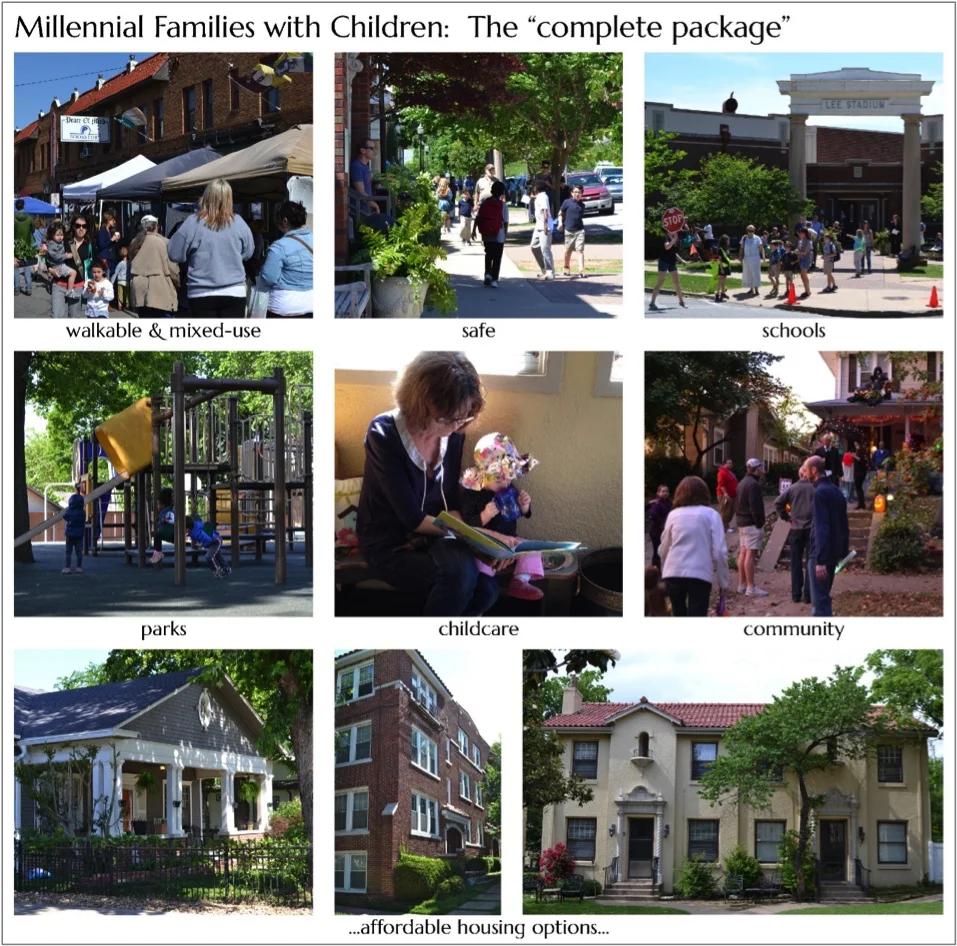Affordable Urban Lifestyles for Millennials with Children
The question of how to find a walkable urban neighborhood that's also affordable is one that occupies the minds of many Americans. Add in a need for good schools, parks, and other child-friendly amenities, and it can seem like there's no town that will truly check all the boxes. Jennifer Griffin answered this quandary for her own family in this summer in a series of articles about finding an affordable urban lifestyle for millennials with children. In it, she shares her own journey to finding an affordable home in a surprising location through creativity and persistence, as well as offering ideas for others looking to do the same.
As someone who is contemplating questions of how to affordably raise future children in an urban neighborhood, I appreciated this series and I think many of our readers did as well. Today, Jennifer's story also provides some insight for those who have asked us, "Why did Strong Towns choose to host its national summit in Tulsa?"
—Rachel Quednau
Tulsa, Oklahoma, is one of the most unlikely suspects to attract urban, entrepreneurial millennials. Yet here we are.
"Affordable urban living for millennial families with children has the potential to become one of the largest market demands in the near future.
"My interest in this issue came from my husband’s and my own struggle in dealing with it. Like many young adults of our millennial generation, my husband and I spent the decade after graduating college living and working in some of the major metropolitan cities in the US and abroad—cities like London, New York, and Washington, DC. As we entered our 30s and started thinking about having kids, we wanted to find a place to start our family that would allow us to maintain our urban lifestyle with our children, both for our sake and for theirs. However, as architects and urban designers on middle-class salaries, being able to do so affordably in these top-tier cities seemed impossible..." Read more.
Affordable Urban Lifestyles for Millennials with Children: Part 2
A diverse array of housing types in each neighborhood makes Tulsa, Oklahoma, a surprisingly great town for millennials with children.
"In a previous article, I discussed how affordable urban living for millennial families with children has the potential to become one of the largest market demands in the near future. Moreover, as these urban, forward-thinking, entrepreneurial millennials with kids get priced out of the major metropolitan cities, they are now beginning to relocate to 2nd- and 3rd-tier cities, often in traditional ‘collar neighborhoods’ on the edges of downtown. These neighborhoods are inclusive of many or all of the desired lifestyle elements that urban millennials with children want (e.g., walkable and mixed-use with quality kid-friendly amenities, institutions, and infrastructure). Continuing with our case study of Tulsa, Oklahoma, let’s now discuss more specifically a number of lifestyle options these millennial families are finding in 2nd- and 3rd-tier cities.
"It should be noted that one of the greatest virtues of these traditional, pre-war collar neighborhoods—especially of those in Tulsa—is the incredibly diverse array of housing types seamlessly integrated within them..." Read more.
About the Author
Jennifer Griffin is a practicing design professional and founding principal of J Griffin Design, LLC. She has worked in the US, UK, and Central America on a variety of projects, from small-scale renovations and additions of historic structures, to mixed-use urban infill projects, to master plans at both the neighborhood and regional scales. Her work has received multiple Congress for the New Urbanism Charter Awards. Jennifer was educated at the University of Notre Dame, from which she received both her Bachelor of Architecture and her Master of Architectural Design and Urbanism degrees. She also has served on the faculty of the University of Notre Dame School of Architecture, where she has taught urban and architectural design courses at both the graduate and undergraduate level while conducting research on the relationship between the built environment and human flourishing.



